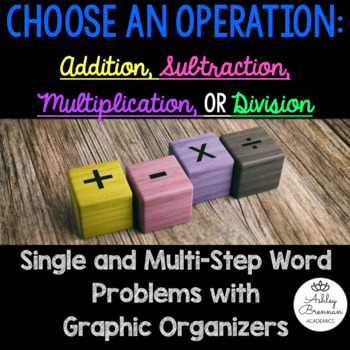Word Problems with Graphic Organizer Bundle
- Zip
Products in this Bundle (2)
Also included in
- Save about 20%! This zip file includes 6 individual products! All are word problems with graphic organizers. There are six different templates for single and multi-step word problems. 2 resources include addition and subtraction single and multi-step word problems, 2 resources included multiplicaPrice $14.00Original Price $18.00Save $4.00
Description
This bundle includes one step and multi-step word problems with graphic organizers to help students break down their thinking and increase problem solving skills when working through word problems. Each resource includes 16 word problems, word problem words handout, a blank graphic organizer to use in your own word problems and/or in a smart pal, and answer keys. The bundle is 20% off of the individual resources.
Check out the individual resources here:
Choose an Operation Word Problems with Graphic Organizers NO PREP
Choose an Operation MULTI STEP Word Problems with Graphic Organizers NO PREP
You may also like:
Math Concepts and Applications Practice Sheets Grade 2 Special Education
Math Concepts and Applications Practice Sheets Grade 3 Special Education
Math Concepts and Applications Practice Sheets Grade 4 Special Education
Math Concepts and Applications Practice Sheets Grade 5 Special Education
Yoga Brain Breaks and Positive Affirmations
Click to connect with me!
Email: ashleymbrennan@yahoo.com




